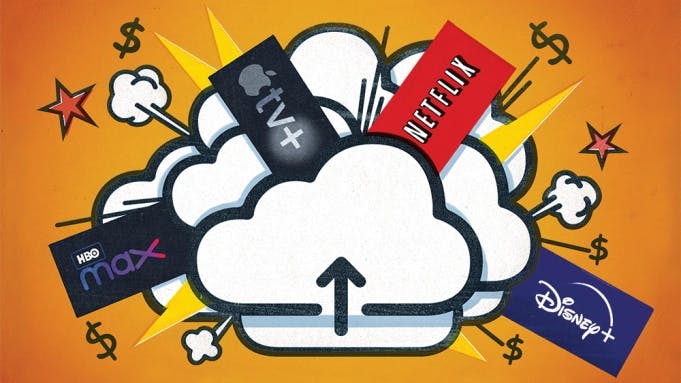
Cable sucks. Beyond dealing with the companies that sell it, the service itself involves paying for a bunch of channels you don’t care about so that you can watch the few channels you do, with commercials.
The promise of streaming was magnificent. Watch whatever you want, whenever you want, without ads, for a monthly fee a fraction of the cost of cable. All episodes drop at once, so you can finally watch shows meant to be told sequentially (like Lost, or Breaking Bad) without weeks in between.
For years, if you wanted to stream TV and movies, you had a Netflix subscription. You likely shared it with your family and friends. And because most production studios had yet to realize the importance of streaming, you could watch an incredibly diverse array of content for one low price.
A few years ago, that began to change.
With the advent of the “streaming wars,” production companies who had finally recognized what they’d been missing out on decided they wanted to be Netflix. They let their contracts expire.
Within a short span of time, we found ourselves in an incredibly crowded field; beyond Netflix, there's Amazon Prime, Hulu, Disney+, HBO Max, ESPN+, Paramount+ (a mountain of entertainment!), Peacock, IMDB TV, Tubi, Apple TV+, Showtime, STARZ, Discovery+, PLUTO TV, Britbox, PBS+, BHD, and more.
The COVID-19 pandemic accelerated this process significantly, as other sources of revenue such as theatrical releases and amusement parks dried up for major players.
Not all streaming services serve the same purpose. Apple TV+ and Amazon Prime are attempting to create higher quality content as an additional benefit that will get you to purchase a prime subscription or an iPhone. Bankrolled by trillion dollar companies with amazing revenue engines outside of streaming, they're supported by companies who don't need to turn a profit on content.
Some services have already spectacularly failed, like Quibi.
Quibi was terribly mismanaged, but the idea behind it wasn't wrong. Streaming services are competing with short-form content for their users' attention. Free alternatives for quick entertainment like YouTube and TikTok remain major concerns for any streaming service.
While Quibi crashed and burned quickly, the other players will likely stick around for a while longer. Eventually it is possible that a couple large streamers emerge, which the smaller services will return to licensing to. But we will likely never return to the age of one streaming service.
With the division of streaming came many of the issues that plagued cable. Your favorite content was now divided across several subscriptions (which have been continuously increasing in price). Many services have implemented ads and commercials.
As companies began to realize the “drop it in one go” model Netflix pioneered was unsustainable, they returned to a weekly release schedule. This is preferable for the creation of “watercooler” type shows like the Mandalorian or Game of Thrones.
But the reality is that in this splintered environment, it is extremely difficult for unknown IPs to continuously break through the cultural zeitgeist for more than a day. There is simply too much content, on too many platforms.
Today, the average American household subscribes to 4 streaming services (with 85% subscribed to at least one).
I'd argue this is still a huge improvement over cable. You can access a nearly infinite (depending on the streaming service) catalog of content, whenever you want. There’s no longer a single player in control of all your channels, so you can pick and choose yourself what you care to pay for.
It’s also good to have a competitive market, and competing streamers (as well as other factors) are giving Netflix, the current top-dog, a rough time of it lately.
In some ways this has also led to worse consumer experience. Netflix has increased costs without adding features, canceled dozens of shows, and laid of hundreds of employees. Which in turn makes competing services seem even more appealing.
Many consider the current landscape a “golden age” for TV. In terms of the amount of content being created and released, it’s hard to argue with that.
But it is also a regression from where we were only a few years back. Cable has never been doing worse, with 5 million people cutting their cords last year. But we aren’t heading into the glorious future of streaming envisioned a decade ago.
Rather, the future of streaming appears very familiar.
Households will pick the content they want (say, you care about Marvel and Pixar - you’ll also be paying for Star Wars and National Geographic). Most likely, there will be things on multiple services that you care about. So you’ll subscribe to 3, 4, 5, 6 services. Individually, they might seem cheap, but it all adds up - so maybe you’ll bundle them.
And suddenly, we’ve come full circle. Instead of packaging cable, we’re bundling streaming.